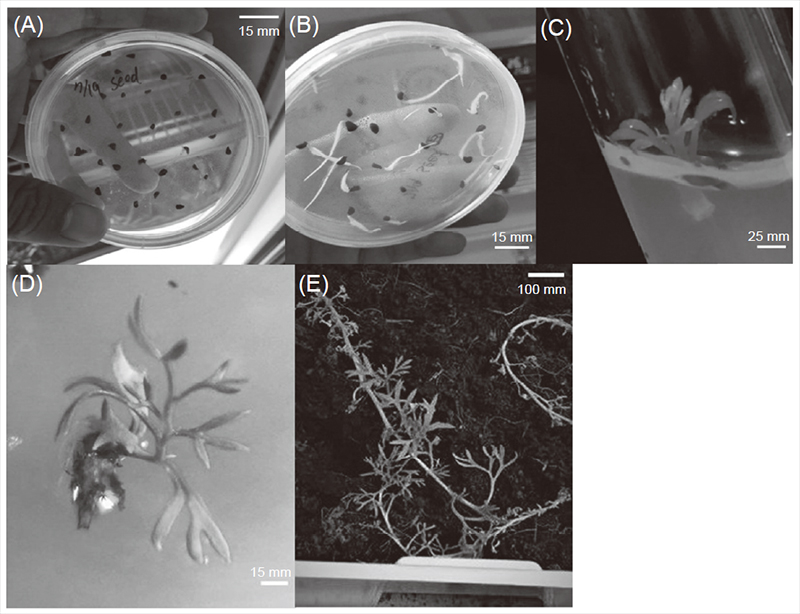All issues

Author:Ke-Wei Liu, Li-Ting Sun, and Li-Te Chin*
Abstract:
Rue belongs to a perennial herb of the Sapindale order. Rue has been reported with many pharmacological properties, such as anti-cancer, anti-viral, antibacterial and anti-inflammatory effects, primarily because of large amounts of indole alkaloids and harmine in its seeds. It has been documented that the plant has been cultivated endogenously in Taiwan as a medicinal plant since the Dutch occupancy period; however, due to its long history of discontinuity and the popularity of modern medicine, the local large-scale cultivation and its corresponding downstream industries seem to have lost sight. Therefore, we collected seeds from the field and markets in the city of Chiayi as the starting materials in the present study. The seeds were germinated in a solid medium containing MS (Murashige & Skoog 1962) basic salts, and then the germinated shoot apex and cotyledons were cut out from the seedlings as explants. Subsequently, 6-benzylaminopurine (BAP) was used to induce multiple shoots. The resulting shoots were cut into single pieces and cultured in the media of 1/2 MS basic salts supplemented with 4-(indol-3-yl) butyric acid for root formation. Finally, the whole plant was transplanted out of the bottle for soil-based growth. Seeds were harvested and semi-purified by acid extraction. The content of harmine was confirmed by high-performance liquid chromatography (HPLC). The results indicate that productive rue plants can be successfully preserved using tissue culture technology, and the presence of harmine alkaloids can also be confirmed from the seeds.
Key words:Rue, Harmine, Tissue culture, High-performance liquid chromatography (HPLC)
Download:![]() PDF Links
PDF Links
- 1. Using Digital Soil Mapping to Predict Soil Organic Carbon Stocks in Zhuoshui River Basin
- 2. Development of a Technique for Forecasting (or Pre-Detection) Anthracnose Disease Incidences of Green Mature Bagging Mango Fruits
- 3. Taxonomic Review of the Genus Asiophrida Medvedev, 1999 in Taiwan (Insecta: Coleoptera: Chrysomelidae: Galerucinae: Alticini), with Notes on Biology
 Submit your manuscript
Submit your manuscript
 Guide for authors
Guide for authors